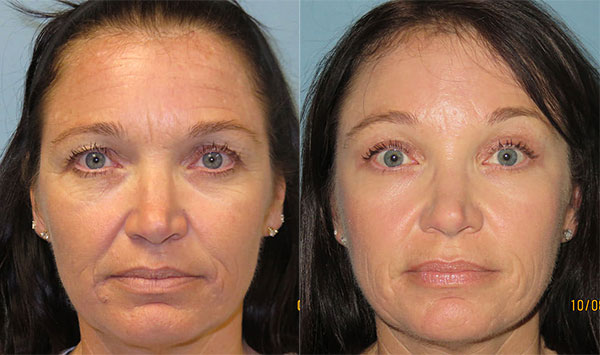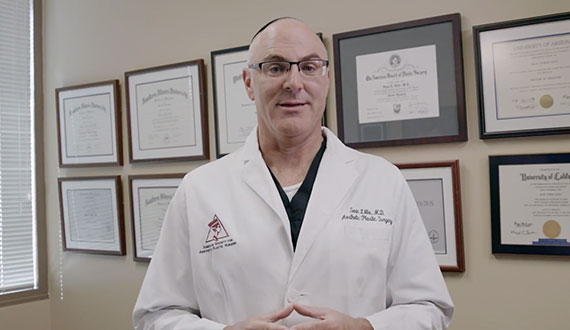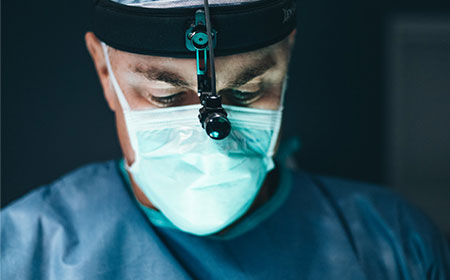Q: What is a brow lift?
A: A brow lift is a procedure that elevates the eyebrows, performed by various techniques. Dr. Lille evaluates the brows and the position of the brows which is determined at the level of where the brows sit in relationship to the eye brow bone or supraorbital rim. Ideally in a female, the apex of the eyebrow should be approximately 1 to 1.2 cm above the eyebrow bone—whereas for men the eyebrow should at least sit evenly with the edge of the bone itself.
Q: What type of procedures are available to raise the brow?
A: Dr. Lille commonly employs two different techniques. The first is called the endoscopic brow lift. For those patients that have a sufficient amount of hair with an anterior hairline that is appropriately positioned, the endoscopic brow lift may be ideal. Two 3cm incisions are placed behind the temporal hairline and a 1 centimeter incision is placed just behind the front hairline.
Endoscopic equipment is emplaced and the tissues are elevated off the forehead area and mobilized back. To keep them in this position, endotine devices or biodegradable spikes are secure to the skull surface and allowed to keep the newly lifted tissues in place.
For those people who have high hairlines, an endoscopic brow lift may not be the ideal procedure because the hairline is moved back approximately a quarter to a half an inch during the endoscopic brow lift procedure. In those specific patients, an anterior forehead lift may be an option although Dr. Lille makes it aware that a scar along the front of the hairline will be present and to many patients this may not be a viable option.
Another technique is called a trans-forehead brow lift which is most notably useful in men. A trans-forehead brow lift accesses the deep forehead lines that are already present. An incision is placed in those already present lines with removal of excess skin. The incision is closed and the brows are subsequently elevated following the closure. This is not an ideal option in women, since forehead wrinkles are not commonly present or deep.
The fourth option is called a transbrowforehead by placing the incision just above the eyebrow line and removing excess skin through this incision. Dr. Lille does not favor this approach, since the scar may not be ideal.
Q: How long do forehead lifts last?
A: The duration of forehead lifts depends upon the patient’s lifestyle, genetics and characteristics of the patient’s skin and the age when the procedure was performed . Generally speaking forehead lifts can last a long time anywhere from seven to fifteen years depending upon the individual.
Q: What is recovery like after a brow lift?
A: Following the procedure, patients will need to abstain from a desk job from anywhere from seven to ten days and physical activity for approximately twelve to fourteen days depending upon the type of forehead lift procedure. Bruising is usually minimal or non- existent and swelling for the more extensive brow lift can last for a couple weeks.
Q: Are there any scars that are visible from a forehead lift?
A: There are no scars visible whatsoever from an endoscopic forehead lift. Since all scars are placed behind the hairline. A trans-forehead brow lift will have an inconspicuously placed scar in the deep forehead crease; and therefore, have a virtually undetectable forehead scar. The anterior forehead lift can be visible if the hair is brushed back . A transbrowlift where the scar is placed just above the eyebrow may also be visible but minimally.
Q: How much does a brow lift cost?
A: The price of a brow lift for Scottsdale patients is based on the details of the procedure, which vary from case to case. The total time needed to perform the surgery, the type of anesthesia required, and the techniques employed all play a role in determining overall cost.





